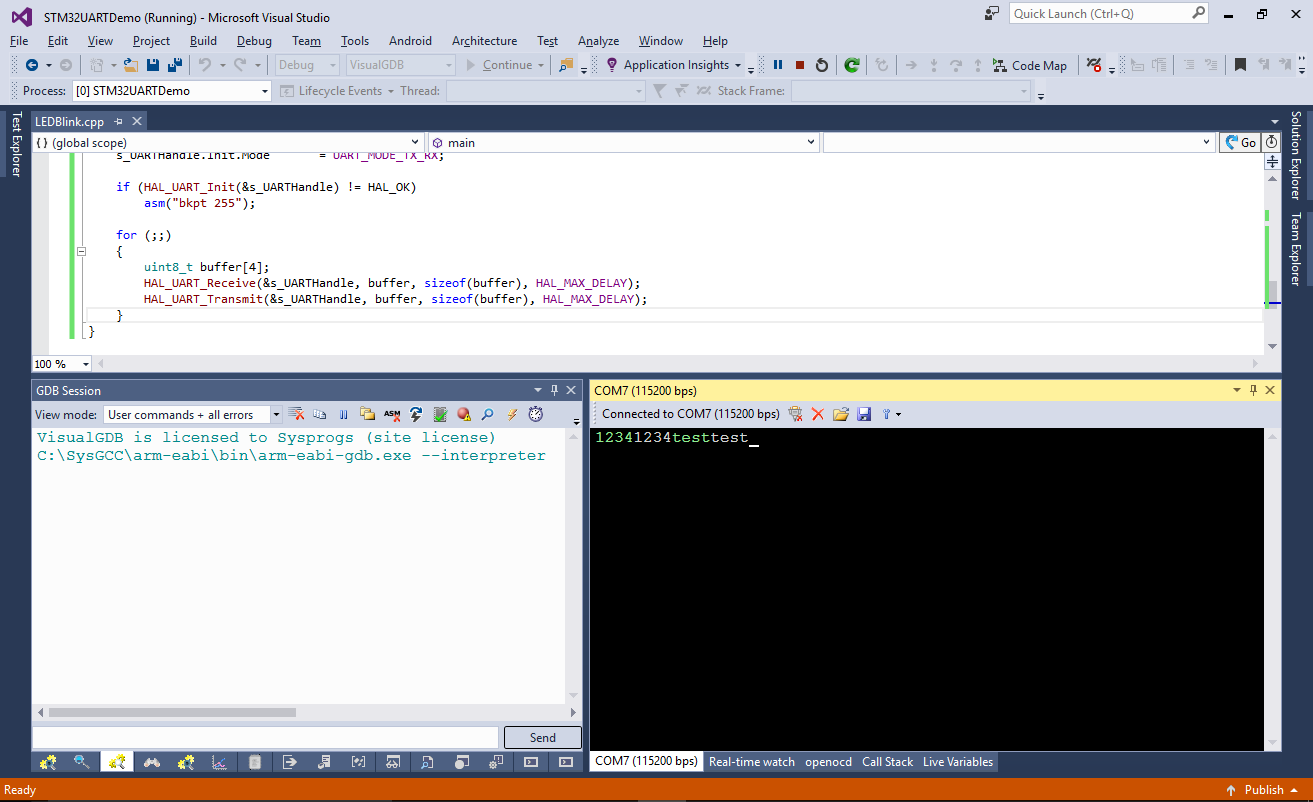
Uart Driver C Code Online
SoCDAM UART DEVICE DRIVER example code. #define IO_BASE 0xFFFC1000 // or whatever #define U_SEND 0x10 #define U_RECEIVE 0x14 #define.
Avr-uart An interrupt driven UART Library for 8-bit AVR microcontrollers Maintained by Andy Gock Derived from original library by Peter Fleury. Interrupt driven UART library using the built-in UART with circular transmit and receive buffers. An interrupt is generated when the UART has finished transmitting or receiving a byte. The interrupt handling routines use circular buffers for buffering received and transmitted data. Setting up The UART_RXn_BUFFER_SIZE and UART_TXn_BUFFER_SIZE symbols define the size of the circular buffers in bytes.
These values must be a power of 2. You may need to adapt this symbols to your target and your application by adding into your compiler options: -DUART_RXn_BUFFER_SIZE=nn -DUART_TXn_BUFFER_SIZE=nn RXn and TXn refer to the UART number, for UART3 with 128 byte buffers, add: -DUART_RX3_BUFFER_SIZE=128 -DUART_TX3_BUFFER_SIZE=128 UART0 is always enabled by default, to enable the other available UARTs, add the following to your compiler's symbol options for the relevant UART (also known as USART) number.
-DUSART1_ENABLED -DUSART2_ENABLED -DUSART3_ENABLED To enable large buffer support (over 256 bytes, up to 2^15 bytes) use: -DUSARTn_LARGE_BUFFER Where n = USART number. The maximum buffer size is 32768. This library supports AVR devices with up to 4 hardware USARTs. Compiler flags AVR/GNU C compiler requires the -std=gnu99 flag. Documentation Doxygen based documentation can be viwed at: • HTML: • PDF: • RTF: Notes Buffer overflow behaviour When the RX circular buffer is full, and it receives further data from the UART, a buffer overflow condition occurs.

Any new data is dropped. The RX buffer must be read before any more incoming data from the UART is placed into the RX buffer.
If the TX buffer is full, and new data is sent to it using one of the uartN_put*() functions, this function will loop and wait until the buffer is not full any more. It is important to make sure you have not disabled your UART transmit interrupts ( TXEN*) elsewhere in your application (e.g with cli()) before calling the uartN_put*() functions, as the application will lock up. The UART interrupts are automatically enabled when you use the uartN_init() functions. This is probably not the idea behaviour, I'll probably fix this some time. For now, make sure TXEN* interrupts are enabled when calling uartN_put*() functions. This should not be an issue unless you have code elsewhere purposely turning it off.
Model kooperatif tipe complete sentences pdf. Penelitian ini menggunakan rancangan nonequivalent pretest-posttest desain.
I would like to know to know why UART errors occur, and when one should check for such errors. There is a post on here that asks about handling individual errors, such as overrun, parity, etc. I am clear on why data overrun happens, why parity error happens, but I would like to know what is the root cause.
My question is more focused on why these errors could occur (physical reasons), and when one should do make error checking a factor for their application. So far my program seems to work great (with no error checking), but I know that noise can mess things up. How could I simulate conditions that could cause the UART Rx/Tx ports to fail?
There are several potential sources for in any circuit. Some of the most common include: • Poorly regulated power supplies; • Switching power supplies; • Insufficient of the power rails near the MCU; • of nearby electromagnetic sources (including 50 or 60Hz from the mains power; even if the circuit is battery powered, it will experience this interference when close enough to a mains source); • RF sources near the resonant frequency of a trace on the circuit board, or one of its harmonics; • Routing of high-current traces on the circuit board near signal lines; • Etc.